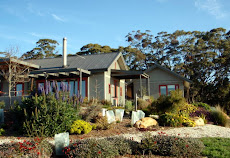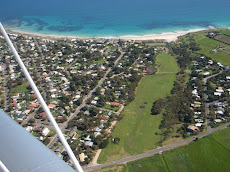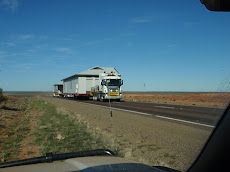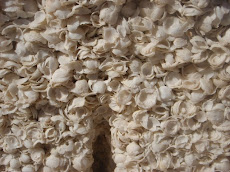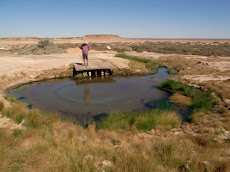For the best part of two weeks we fell into an enforced rest exploring the peninsula waiting on the Toyota dealer in Broome to sort things on July 3rd. This was so good. We visited the beautiful mission church at Beagle Bay (after Charles Darwin), decorated with mother of pearl, ex plored the old mission at Lombardina, now a successful aboriginal community with a delightful paper bark roofed church and a St John of God office delivering medical services. We trudged onto their beach in too much heat and spied a sweeping white arc extending to the horizon. The Middle Lagoon site where we stayed from June 23 was private, close to everything we needed, and with a good view over the ocean. Gentle highlights climaxed with a sunset observation each night, in the hope of seeing the “green flash”, much talked of in yacht cruising circles. Personally I think they get stuck into too much gin, but others do claim to have seen it! No luck yet. Cape Leveque is one of the much talked of places to visit, further up the Dampier Peninsula. There are well developed resort facilities, including some magic “tented” accommodation at $250 a night for four, and it is well done. A charming beach, lighthouse, restaurant of sorts, all very nice but we left after a couple of hours – too many people for a small place.
plored the old mission at Lombardina, now a successful aboriginal community with a delightful paper bark roofed church and a St John of God office delivering medical services. We trudged onto their beach in too much heat and spied a sweeping white arc extending to the horizon. The Middle Lagoon site where we stayed from June 23 was private, close to everything we needed, and with a good view over the ocean. Gentle highlights climaxed with a sunset observation each night, in the hope of seeing the “green flash”, much talked of in yacht cruising circles. Personally I think they get stuck into too much gin, but others do claim to have seen it! No luck yet. Cape Leveque is one of the much talked of places to visit, further up the Dampier Peninsula. There are well developed resort facilities, including some magic “tented” accommodation at $250 a night for four, and it is well done. A charming beach, lighthouse, restaurant of sorts, all very nice but we left after a couple of hours – too many people for a small place.
Our new chums Tony and Diane had wised us up on a spot at the very top of the peninsula, near One Arm Point, and when we called in there to make contact with them we were bowled over by the place and made arrangements to go there as soon as we could. A couple of days later we arrived and began a relaxed four days that stand out as one of the high points of the journey so far. Owned by an aboriginal family and not by a community as such, this place is at the start of an expansion that will cater more and more to people like us. So we are so glad we were there when we were. From our site we looked down onto a tidal lagoon (neaps, range 7 metres). A bronze whaler about five metres long cruised up and down about 100 metres off shore. Dugongs (we did not see one) and turtles are quite common. One of the aboriginal owner’s nephews, Ashley, took us out to Sunday Island to see the old mission there, where his father and uncle were brought up. What a story that is.
relaxed four days that stand out as one of the high points of the journey so far. Owned by an aboriginal family and not by a community as such, this place is at the start of an expansion that will cater more and more to people like us. So we are so glad we were there when we were. From our site we looked down onto a tidal lagoon (neaps, range 7 metres). A bronze whaler about five metres long cruised up and down about 100 metres off shore. Dugongs (we did not see one) and turtles are quite common. One of the aboriginal owner’s nephews, Ashley, took us out to Sunday Island to see the old mission there, where his father and uncle were brought up. What a story that is.
Very briefly, aborigines were on Sunday Island (the Bardi people) when ex convict Harry Hunter (Ashley’s antecedent – Hunter took eight local “wives”) as a trader, along with the (we think Methodist) missionaries, set up a missionary station on the island in the 1890’s. Education and religion were traded for labour, but by the middle of the 20th century the government withdrew funding, decreed that no more support would be given because health and education could not be guaranteed, and forcibly relocated the Bardi, some to the mission at Lombardina, most to the mud flats outside Derby. They were left in Derby for over ten years. Sunday Island became Silent Island.
government withdrew funding, decreed that no more support would be given because health and education could not be guaranteed, and forcibly relocated the Bardi, some to the mission at Lombardina, most to the mud flats outside Derby. They were left in Derby for over ten years. Sunday Island became Silent Island.
Ashley’s uncle Frank Davey had to fight in the High Court to have his families’ ownership recognised. It took ten years. Frank is now the Deputy Chair of the Kimberley Land Council. His understanding of the tug of war for land, between government, miners, pastoralists and the original owners, is a unique one. Anyway, we were guests of an extended aboriginal family. An important part of being there was the “story telling place” – a fireplace in the middle of the camp. It was extraordinary to hear personal experiences from people whose beliefs are strongly shaped by their traditional beliefs. Their explanations for the events going on around them are still “spirit” driven, and out of our ken. It was lovely to see Ashley (age 34) persuade his father to recount tales from his young days on Sunday Island, and to see him listen with awe and great respect.
A small coterie of second timers had collected at Gambanan, set up for several w eeks fishing and story telling. We might have to join them next year!
eeks fishing and story telling. We might have to join them next year!
Helen stayed put on our last day there while I took a spare seat on a day fishing trip across the head of King Sound, to the mainland to the east. We encountered boiling waters pulled in every direction as the tidal race squeezed between hundreds of small and large islands. Flat upwellings of water surrounded with metre high chop at two metre intervals. The 250hp Mercury outboard had to work quite hard through these varying conditions. The inevitable saltwater croc was lounging on a beach as we scooted past. A shoal of Tuna burst from the water beside us, chasing bait fish. An old and barnacled turtle broke the surface and lazily eyed us before rolling off underneath. An hour over a 30 metre deep hole saw us with blue emporer, sweetlip, mangrove jack, spotted cod, and even a metre long shark that was carefully returned with a sore jaw. Our new old mate Bill Gordon, met in the Kimberley, bumped into Helen that afternoon looking at clams in the lagoon so we invited him for dinner. It was a delight to yarn with him again.
Our hedonistic ways nearly led us to miss our booking for the car service in Broome, so we reluctantly headed south again the following day, wondering if we were ready for the sinful and trashy ways of Broome! So many people had been negative about the place. Where would we stay? All booked out we had heard. Where’s the laundrette? Wouldn’t say no to a smoothie though!
















